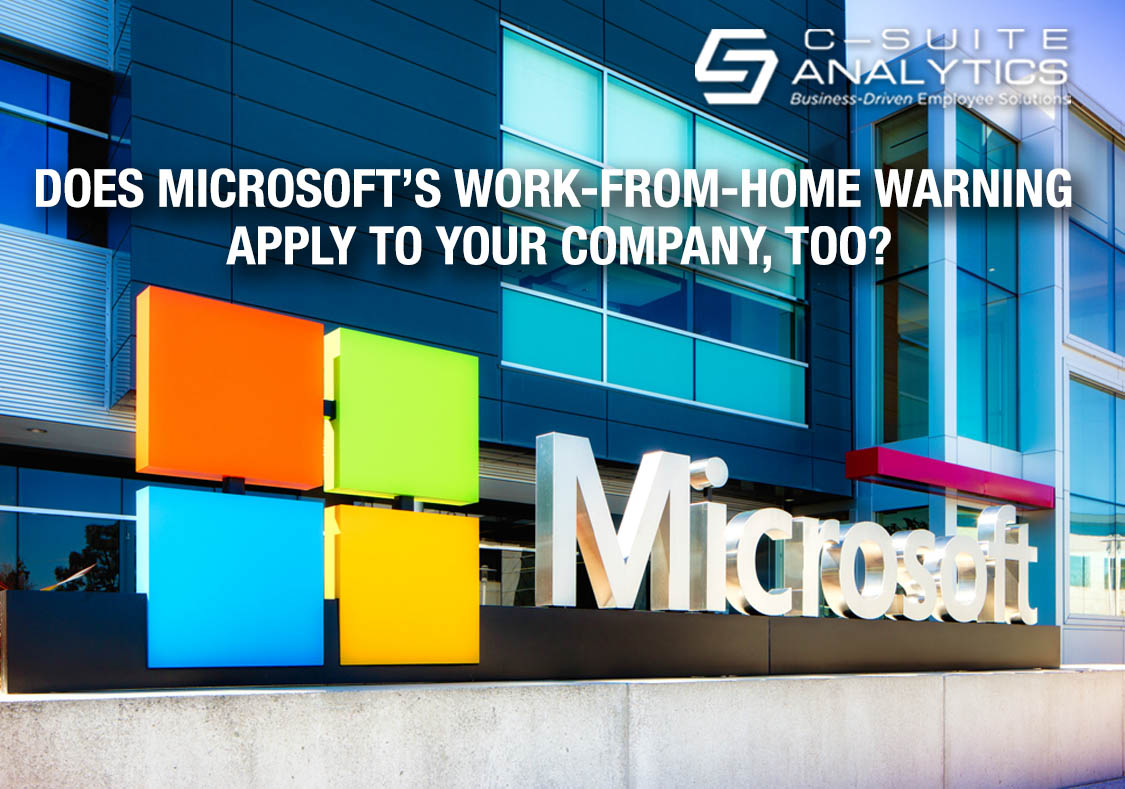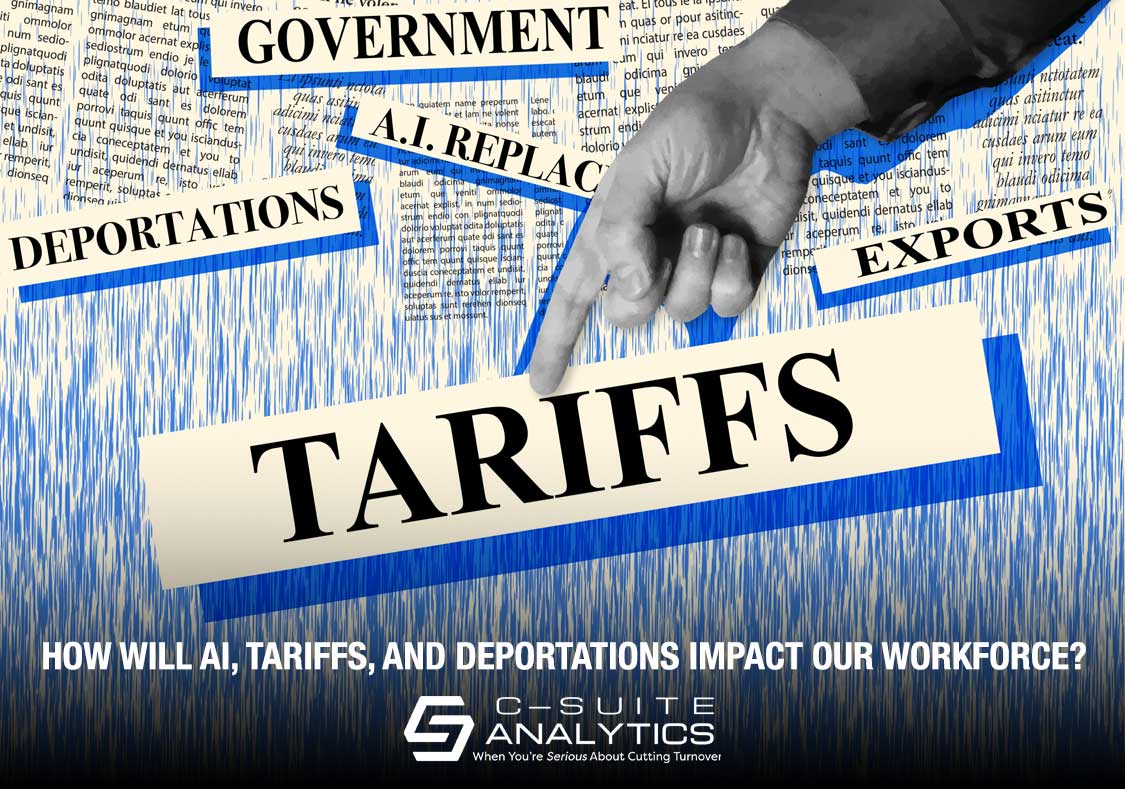AI, deportations, tariffs, and birthrate declines are reshaping America's workforce—blue- and white-collar alike. From baby boomer exits to AI disruptions, breaking down the workforce challenges no leader can afford to ignore.
Does Microsoft’s Work-From-Home Warning Apply to Your Company, Too?

The report is in. Microsoft has released “The New Future of Work, Research from Microsoft Into the Pandemic’s Impact on Work Practices”. All 65 pages of it. Here are three leap-out parts for me:
- During the pandemic, their own internal instant messages increased during 6 PM and midnight by 52%.
- During this same period, 61% of leaders described themselves as “thriving” while just 38% of non-leaders said the same; Little wonder why based on #1.
And third, one Microsoft executive concluded this:
“Those impromptu encounters at the office help keep leaders honest. With remote work, there are fewer chances to ask employees, ‘Hey, how are you?’ and then pick up on important cues as they respond. But the data is clear: Our people are struggling. And we need to find new ways to help them.”
Where to start? Maybe the number of work-from-home employees who are not thriving, which math tells me is nearly two-thirds of them. This at a time when the universal opinion is working from home is one of the good outcomes of the pandemic. Maybe not so good when you are sending messages to colleagues at 10 PM from your dining room.
But the broader and potentially more costly issue for Microsoft is how will they retain those engineers, coders, and other key employees when Indeed’s job postings are higher than they were before the pandemic? How do these employee frustrations manifest themselves when unemployment reaches 3.2%, as one prediction tells us in the Wall Street Journal?
And then this. The currently proposed infrastructure legislation proclaims the creation of 19 million new jobs. And when you think “infrastructure”, jobs like engineers and coders come to mind. And so do jobs your company might have that include anyone working with their hands…or more generally with their minds.
Given these extreme predictions of talent shortages, this is not an ideal time to pilot a new, untested strategy like working from home that might be either good or bad for your employees. But then 2020 wasn’t a good time for a pandemic, either.
The important lesson from the Microsoft executive is about picking up on subtle employee cues, the ones that require zeroing in on listening to your employee’s voice tones and the expressions on their faces. We can still discern those things on zoom but are we equally attuned to them? And are our employees as willing to express them as they would be in person? The answer is clearly “no”. The question is what is the degree of the loss? And how do we overcome it?
I invented Stay Interviews so leaders would schedule work talk with employees from the employee’s point of view. Think about it. Every employee meeting is about work from the leader’s perspective such as “please do this” and “did you do that”. Over the years organizations have built a few employee questions into performance reviews or they might have developed specific agendas about development…but missing was a comprehensive, structured way for leaders to learn about work from their employee’s viewpoint. And it starts with…
I want to schedule a meeting with you so I can learn what I can do to make working here better for you.
Five questions. Skill-building including probing, listening, taking notes, taking responsibility. Practice on skills and building solutions. And most importantly, building the kind of 1-1 trust that motivates employees to relish their work and look forward to more opportunities to contribute. The kind of employee behaviors we associate with the code words of engagement and retention.
Forward-thinking executives and HR professionals who are continuing work-from-home have a replacement plan for these subtle communications…that there is a way for leaders to stay close to their teams. We pride ourselves in cutting turnover by 30% and more…and our clients would tell you our success is thriving even during the pandemic. Please let me know if you need Stay Interview help.
Dick Finnegan is SHRM’s top-selling author and top-rated webcast presenter. Please email your comments to DFinnegan@C-SuiteAnalytics.com. Contact Dick to discuss how we can help you retain your valuable employees. You are also welcome to forward this blog to anyone you believe would find it helpful.



